In today’s competitive digital landscape, businesses are moving away from traditional marketing methods that interrupt potential customers with ads and promotions. Instead, the focus is on inbound marketing, a strategy designed to attract, engage, and delight customers by providing value rather than pushing sales messages. This guide will take you from beginner concepts to advanced strategies, providing a complete roadmap for mastering inbound marketing.
What is Inbound Marketing?
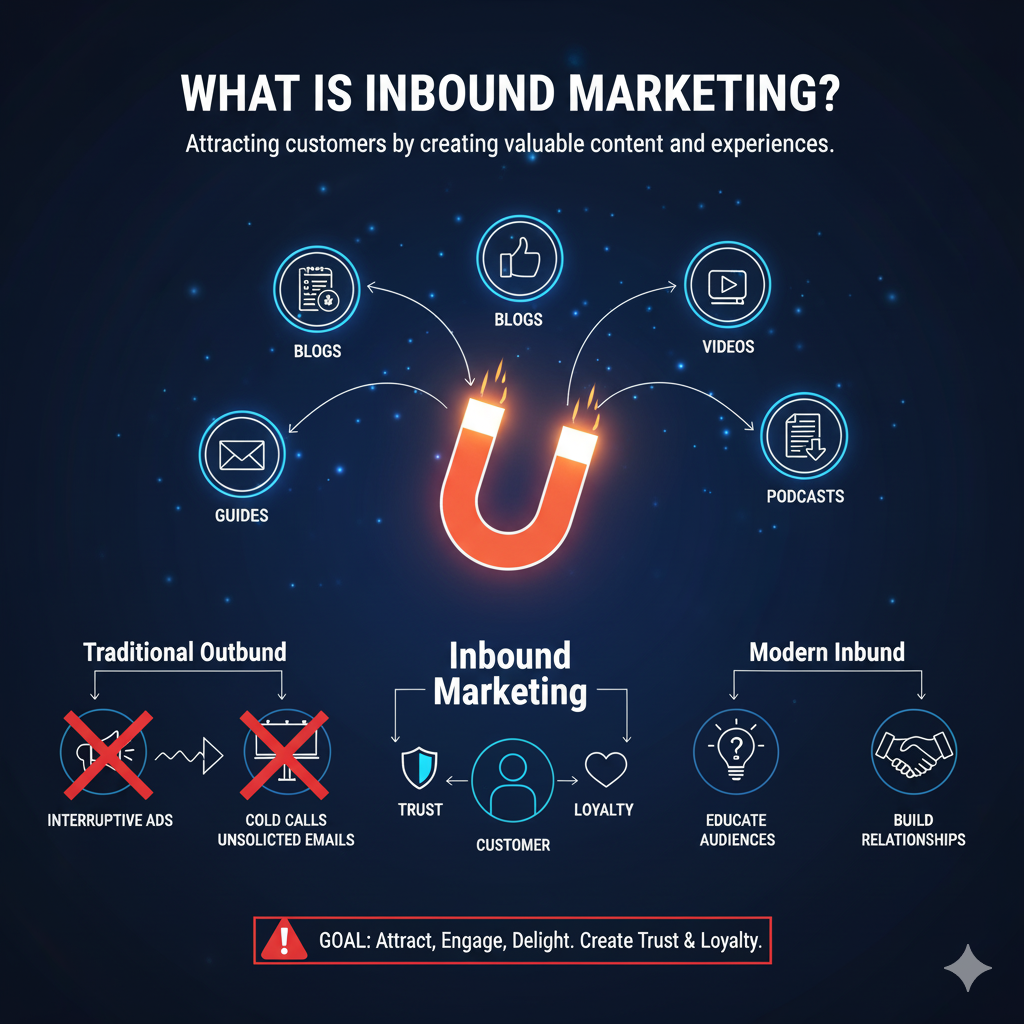
Inbound marketing is a strategy where businesses draw potential customers toward their brand by offering relevant, helpful, and engaging content. Unlike outbound marketing, which interrupts people with advertisements, cold calls, or unsolicited emails, inbound marketing pulls audiences in naturally by addressing their needs, solving problems, and educating them.
The ultimate goal is to create trust, build authority, and foster long-term relationships that naturally lead to conversions and customer loyalty.
Beginner Level: Understanding the Basics
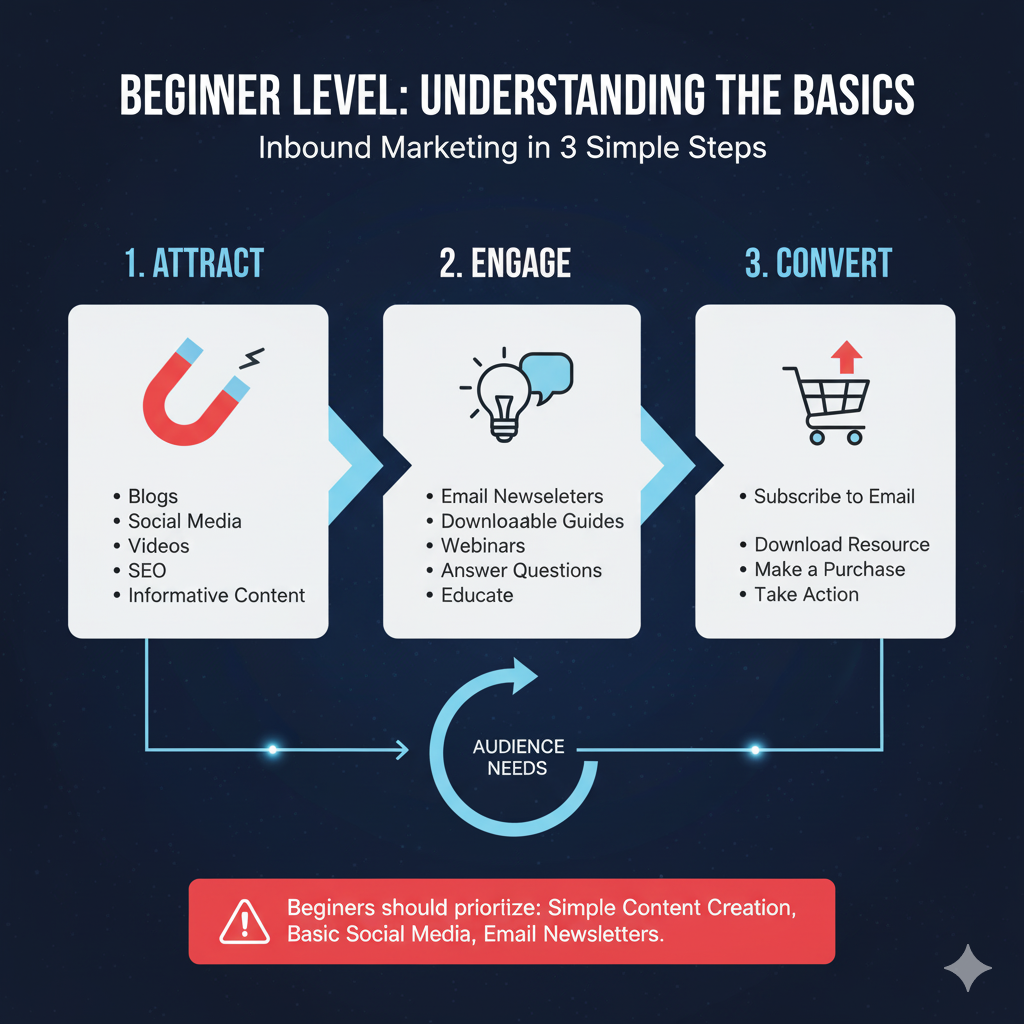
For beginners, inbound marketing can be broken down into three simple steps:
- Attract – Capture the attention of the right audience using blogs, social media posts, videos, and SEO-optimized web pages. The focus is on creating content that is informative and solves problems.
- Engage – Once visitors are on your platform, provide content that answers questions, educates, or entertains. Email newsletters, downloadable guides, and webinars are effective tools at this stage.
- Convert – Encourage visitors to take meaningful actions such as subscribing to your email list, downloading a resource, or making a purchase.
At this level, the focus is on understanding your audience and consistently delivering valuable content. Beginners should prioritize simple content creation, basic social media engagement, and email newsletters.
Intermediate Level: Refining the Strategy
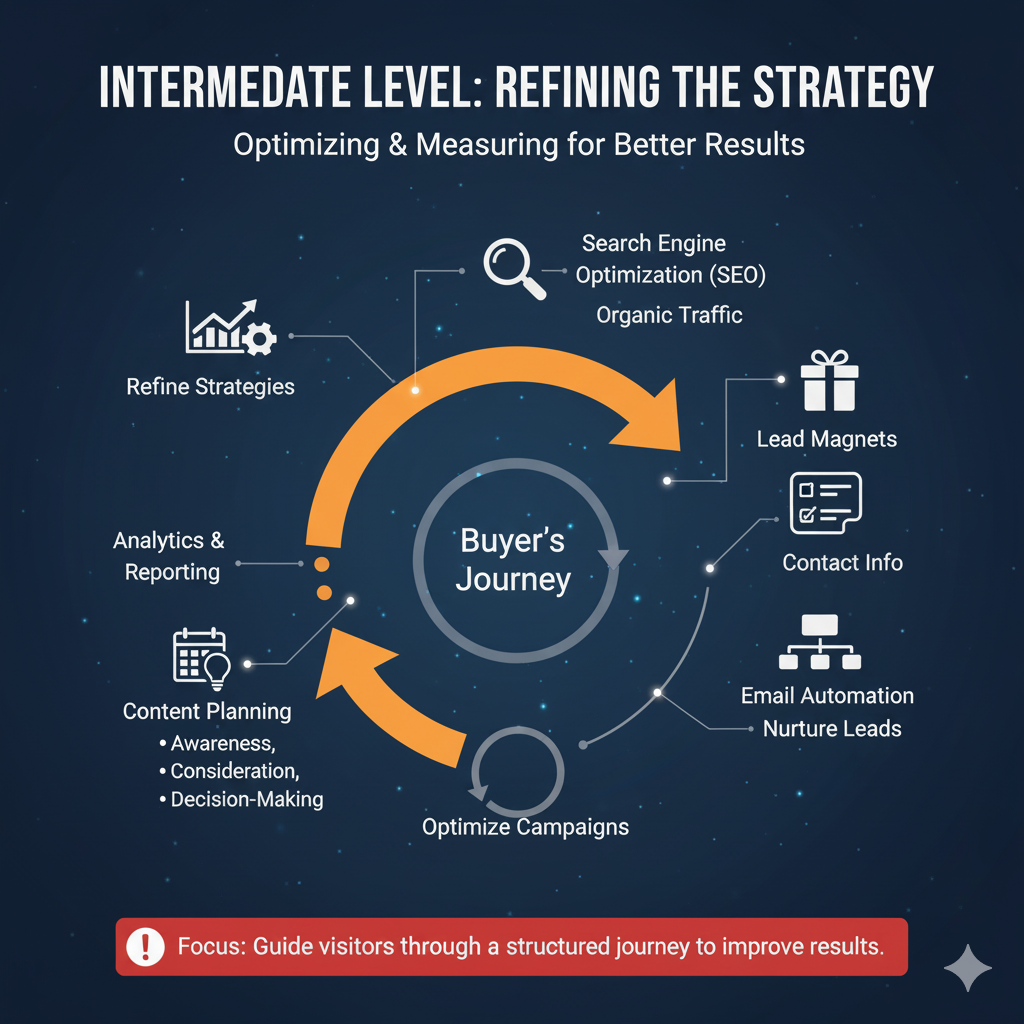
Once the basics are in place, intermediate inbound marketers focus on enhancing engagement and tracking results. Key strategies include:
- Search Engine Optimization (SEO): Optimizing content for relevant keywords to attract organic traffic.
- Lead Magnets: Offering free resources such as ebooks, checklists, or templates in exchange for contact information.
- Email Automation: Sending personalized emails based on user behavior to nurture leads over time.
- Content Planning: Strategically creating content for different stages of the buyer’s journey — awareness, consideration, and decision-making.
- Analytics and Reporting: Tracking website traffic, engagement metrics, conversion rates, and audience behavior to refine strategies.
At this stage, marketers begin to measure performance and optimize campaigns to improve results. The focus shifts from just attracting visitors to guiding them through a structured journey toward conversion.
Advanced Level: Mastering Inbound Marketing
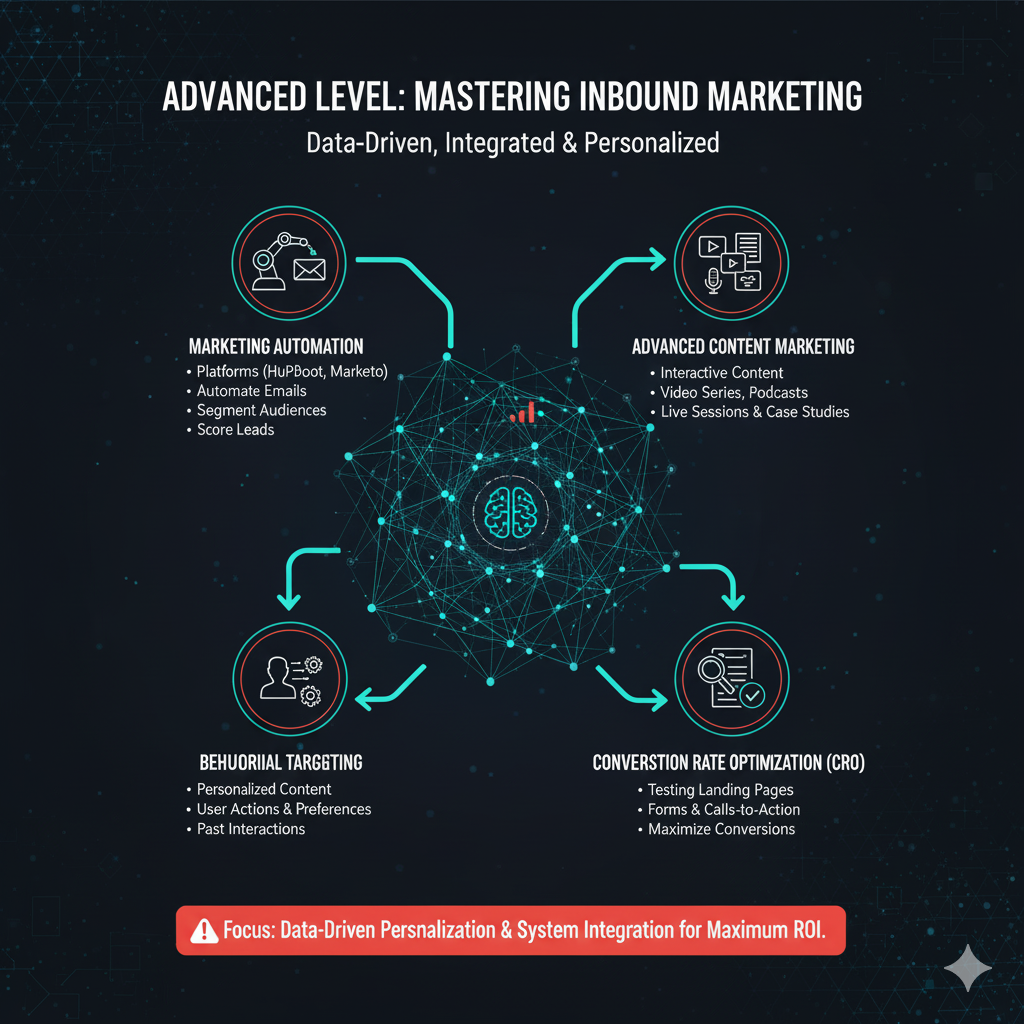
At an advanced level, inbound marketing becomes a data-driven, integrated system that combines multiple channels and tools to deliver highly personalized experiences. Techniques include:
- Marketing Automation: Platforms like HubSpot, Marketo, or ActiveCampaign help automate emails, segment audiences, and score leads.
- Advanced Content Marketing: Using interactive content, podcasts, video series, live sessions, and case studies to deepen engagement.
- Behavioral Targeting: Delivering personalized content based on user actions, preferences, and past interactions.
- Conversion Rate Optimization (CRO): Testing landing pages, forms, and calls-to-action to maximize conversions.
- Customer Lifecycle Marketing: Mapping the full journey from visitor to loyal advocate and creating strategies for each stage.
Advanced inbound marketing focuses on integrating all digital channels, analyzing user data, and delivering the right content at the right time, ensuring higher engagement and ROI.
Core Components of Inbound Marketing
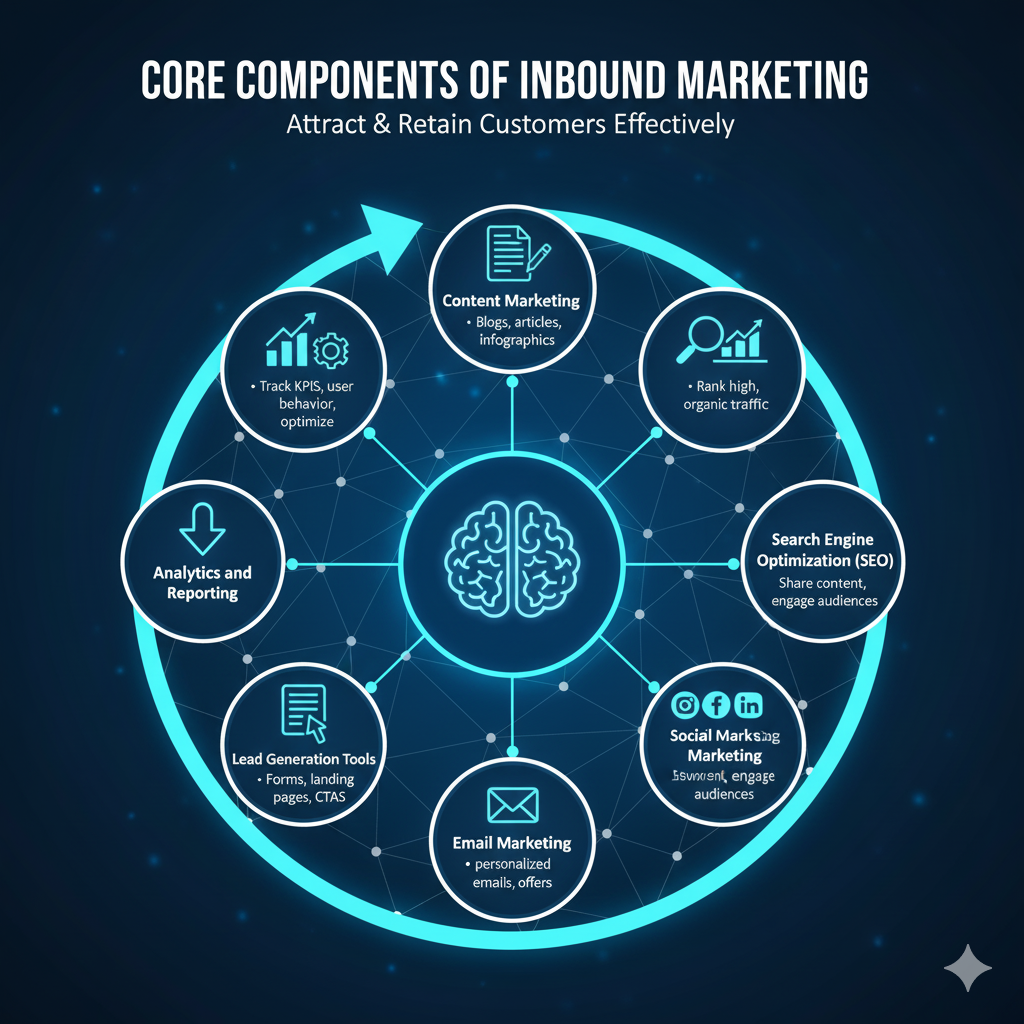
Inbound marketing relies on several key elements to attract and retain customers effectively:
- Content Marketing: Creating blogs, articles, videos, and infographics that educate and inform.
- Search Engine Optimization (SEO): Optimizing content to rank higher in search engines and attract organic traffic.
- Social Media Marketing: Sharing content and engaging with audiences on platforms like Instagram, Facebook, LinkedIn, and YouTube.
- Email Marketing: Sending newsletters, personalized emails, and promotional offers to nurture leads.
- Lead Generation Tools: Forms, landing pages, and calls-to-action to convert visitors into leads.
- Analytics and Reporting: Tracking KPIs to measure success, understand user behavior, and optimize campaigns.
Benefits of Inbound Marketing
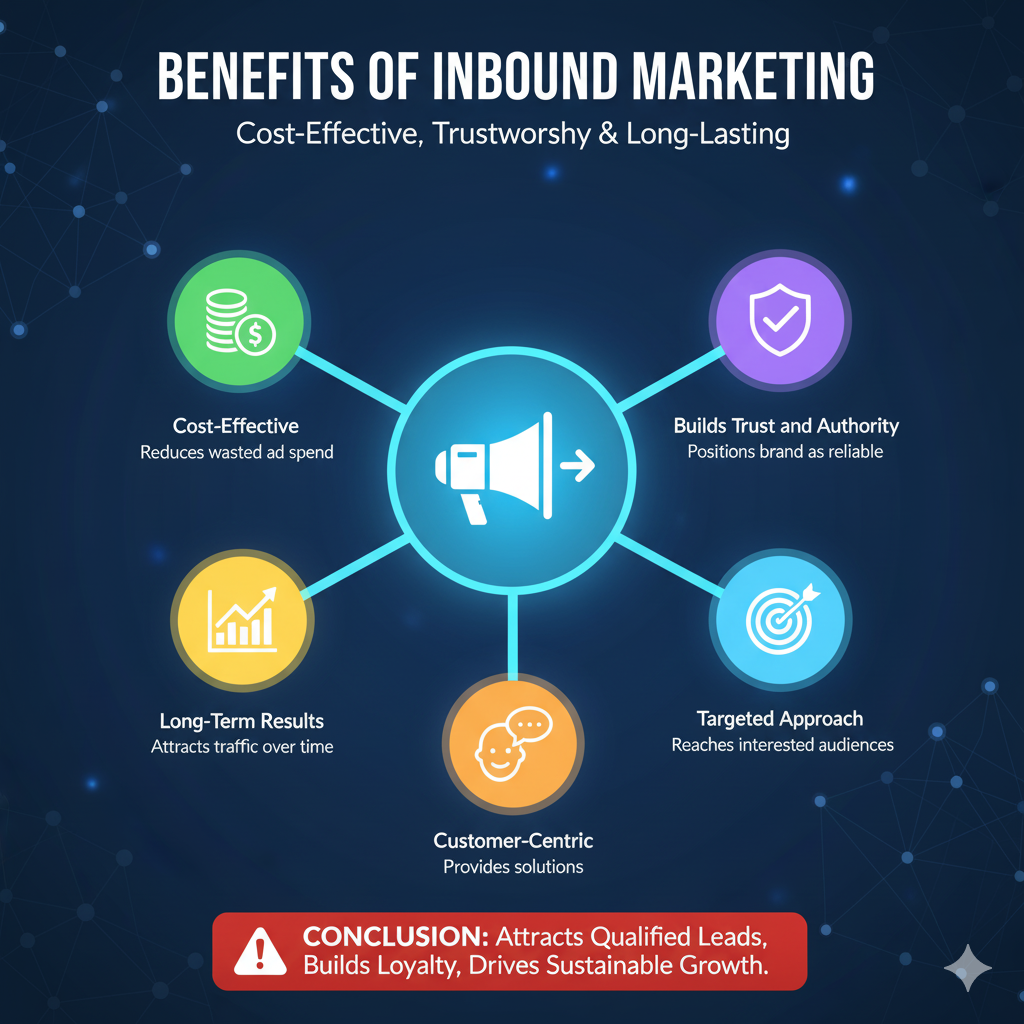
Inbound marketing offers numerous advantages over traditional marketing:
- Cost-Effective: Focuses on attracting qualified leads, reducing wasted ad spend.
- Builds Trust and Authority: Provides valuable content that positions your brand as a reliable source.
- Long-Term Results: High-quality content continues attracting traffic and leads over time.
- Targeted Approach: Reaches audiences already interested in your niche, increasing conversion probability.
- Customer-Centric: Focuses on understanding audience problems and providing solutions, rather than interrupting them with ads.
Common Inbound Marketing Channels and Tools
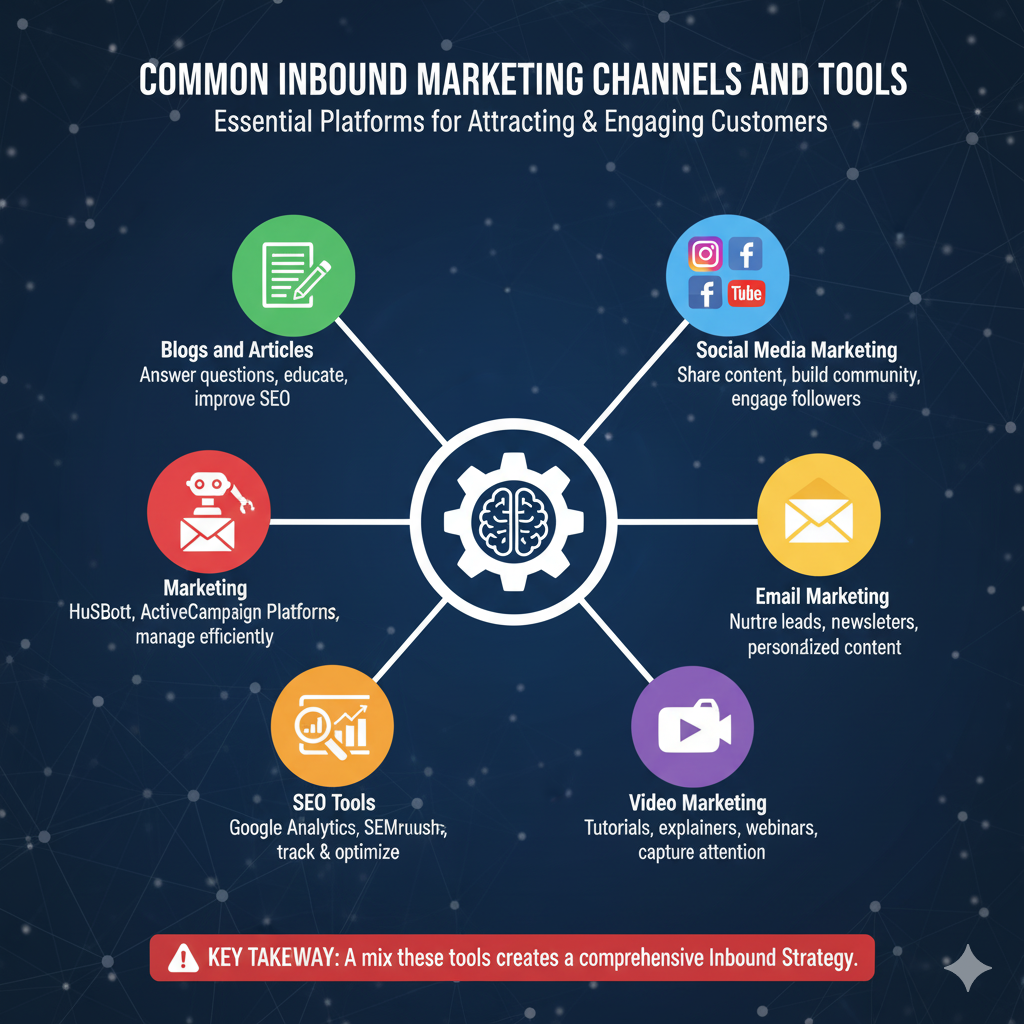
- Blogs and Articles: Answer questions, educate audiences, and improve SEO.
- Social Media: Share content, build a community, and engage with followers.
- Email Marketing: Nurture leads through newsletters, drip campaigns, and personalized content.
- Video Marketing: Tutorials, explainer videos, and webinars to capture attention and educate.
- SEO Tools: Google Analytics, SEMrush, Ahrefs for tracking performance and optimizing content.
- Marketing Automation Platforms: HubSpot, ActiveCampaign, or Marketo to manage campaigns efficiently.
Inbound vs Outbound Marketing
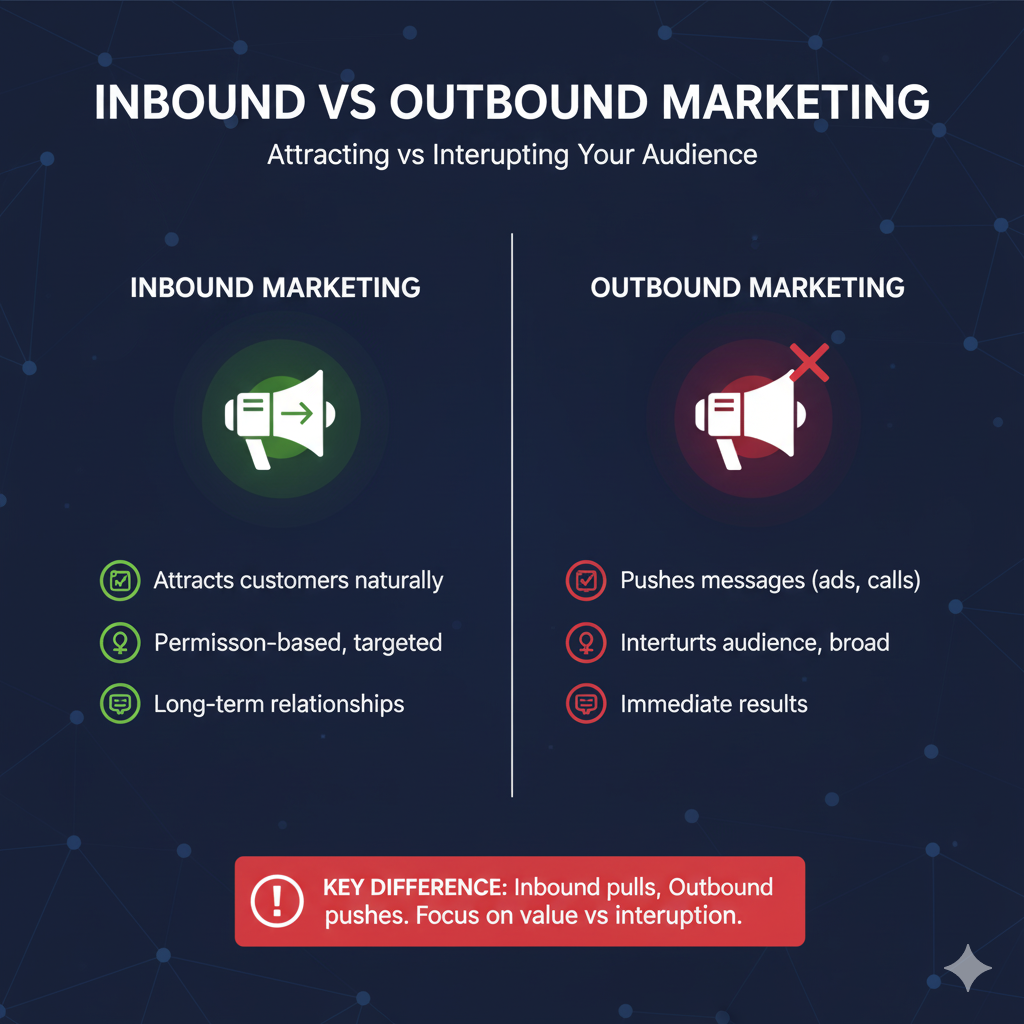
It’s important to understand how inbound marketing differs from traditional outbound methods:
- Inbound Marketing: Attracts customers naturally through valuable content. It is permission-based, targeted, and focuses on long-term relationships.
- Outbound Marketing: Pushes messages through ads, cold emails, or calls. It interrupts the audience, is broader in reach, and focuses on immediate results.
Advanced Tips for Inbound Marketing Success
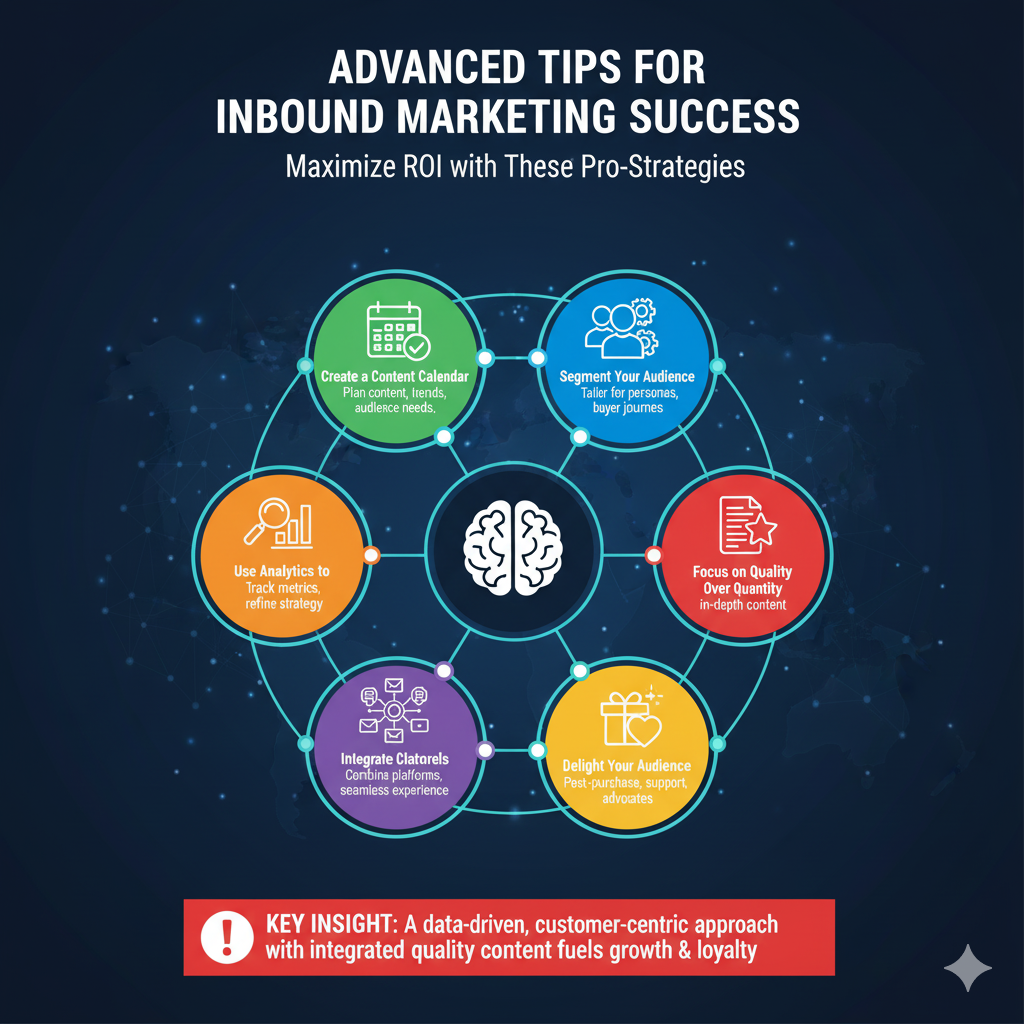
- Create a Content Calendar: Plan content around trends, audience needs, and seasonal opportunities.
- Segment Your Audience: Tailor content for different customer personas and buyer journey stages.
- Use Analytics to Improve: Track metrics like traffic, engagement, and conversions to refine your strategy.
- Focus on Quality Over Quantity: High-quality, in-depth content performs better than frequent low-value posts.
- Integrate Channels: Combine blogs, social media, email, and video campaigns to create a seamless experience.
- Delight Your Audience: Provide exceptional post-purchase content, tutorials, or support to turn customers into brand advocates.
Conclusion
Inbound marketing is a powerful strategy that evolves with your business. From creating basic blog posts and social media updates to leveraging automation, analytics, and personalization, inbound marketing covers all levels from beginner to advanced.
By attracting the right audience, engaging them with valuable content, converting them into loyal customers, and delighting them throughout their journey, businesses can build lasting relationships, increase brand authority, and achieve sustainable growth.
Inbound marketing is not just about promotion — it’s about providing value, solving problems, and connecting with your audience in a meaningful way. Companies that master inbound marketing are better positioned to succeed in today’s digital-first world